Intercultural Communication EAP Activities, Worksheets & Role-Plays
Cross-Cultural Challenge
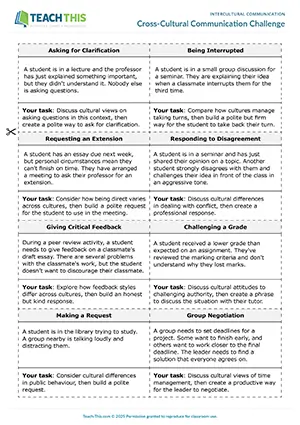
EAP Intercultural Communication Activity - Vocabulary and Speaking: Discussion, Problem-solving, Presenting, Communicative Practice - Group Work
In this rewarding intercultural communication activity, students explore how different cultures approach common academic challenges, collaboratively...
Direct and Indirect Communication Styles
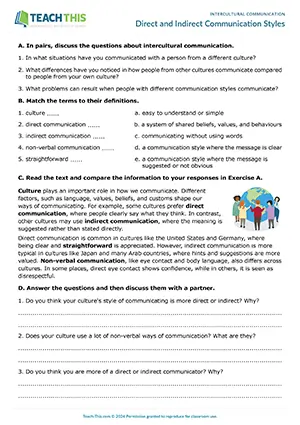
EAP Intercultural Communication Worksheet - Reading and Writing Exercises: Comprehension Questions, Paragraph Writing - Speaking Activity: Discussion
In this useful intercultural communication worksheet, students learn about direct and indirect communication styles and the importance of understanding...
Cultural Dimensions Analysis
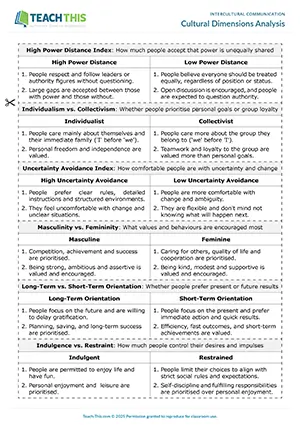
EAP Intercultural Communication Activity - Speaking and Writing: Discussion, Answering Questions, Presenting, Communicative Practice - Group Work
In this insightful intercultural communication activity, students analyse academic scenarios using Hofstede's cultural dimensions theory and propose solutions for...
Direct and Indirect Conflict-Resolution
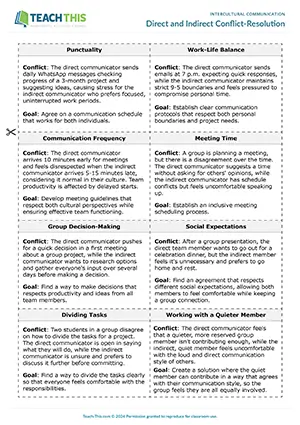
EAP Intercultural Communication Activity - Speaking: Role-Play, Discussion, Freer and Communicative Practice - Group Work
This intriguing intercultural communication role-play helps students identify direct and indirect communication styles across cultures and reflect and adapt their own style to prevent misunderstandings...
Global Classroom Match
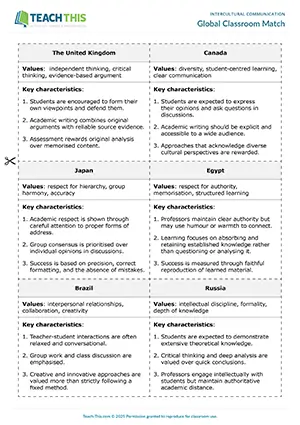
EAP Intercultural Communication Game - Reading and Speaking: Matching, Discussion, Problem-Solving, Presenting, Communicative Practice - Group Work
In this thought-provoking intercultural communication game, students match cultural academic values to different country profiles, discuss potential intercultural...
Global Classroom Mixer
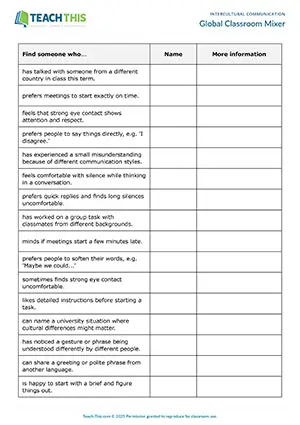
EAP Intercultural Communication Activity - Speaking: Asking and Answering Questions, Freer and Communicative Practice
In this free intercultural communication 'Find Someone Who' activity, students ask and answer questions about cultural differences and cross-cultural experiences in academic settings. First, students review...
Intercultural Communication Bingo
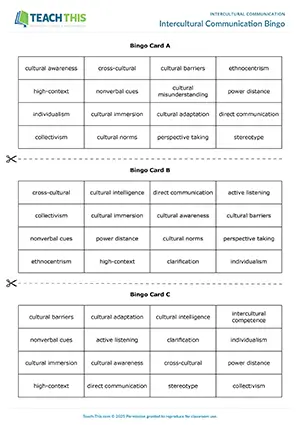
EAP Intercultural Communication Game - Vocabulary: Bingo, Matching - Group Work
In this engaging intercultural communication game, students play bingo by matching intercultural terms with their meanings and briefly using them in context. In groups, the bingo caller reads a definition at random from the caller's sheet, e.g...

